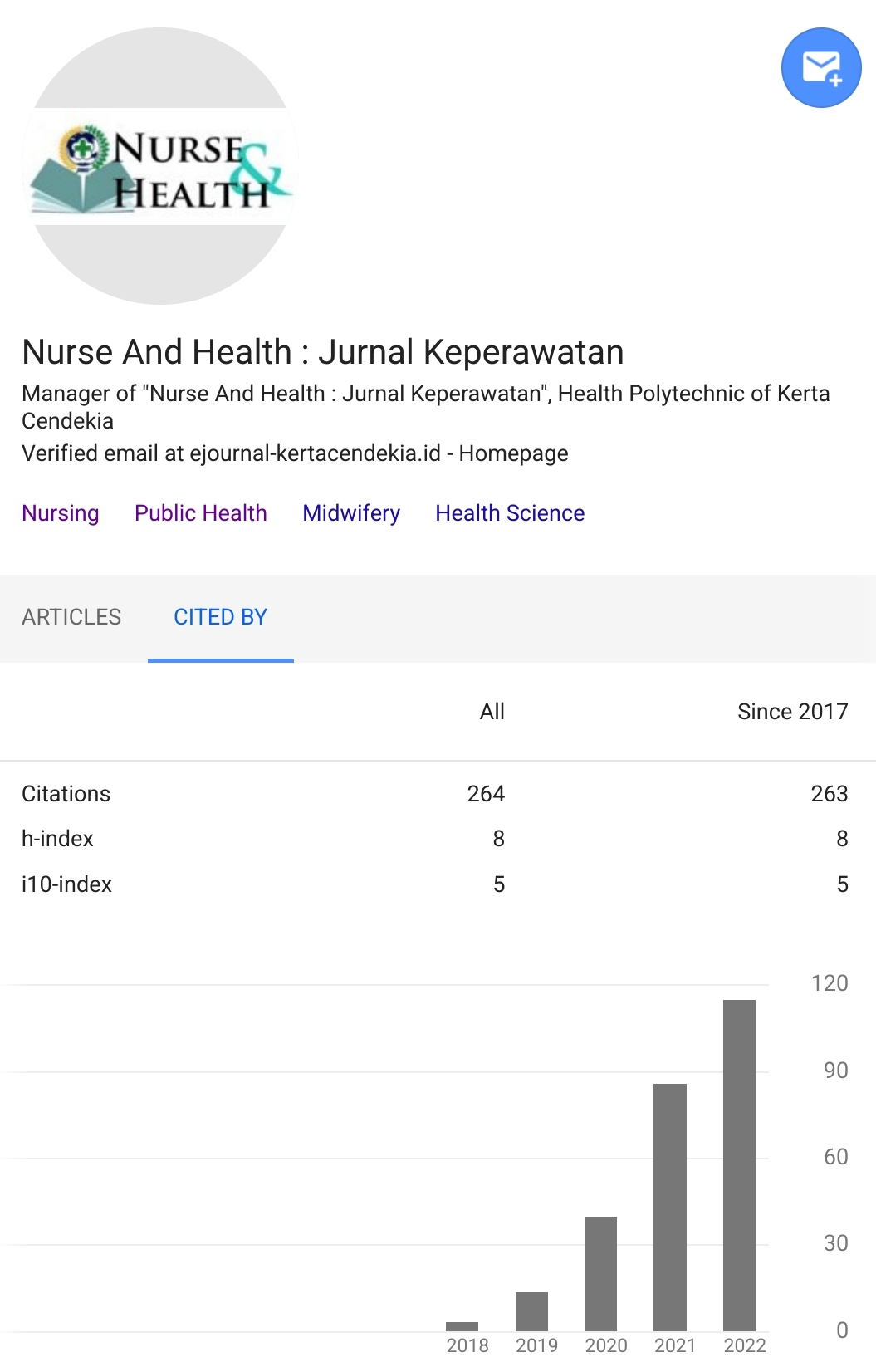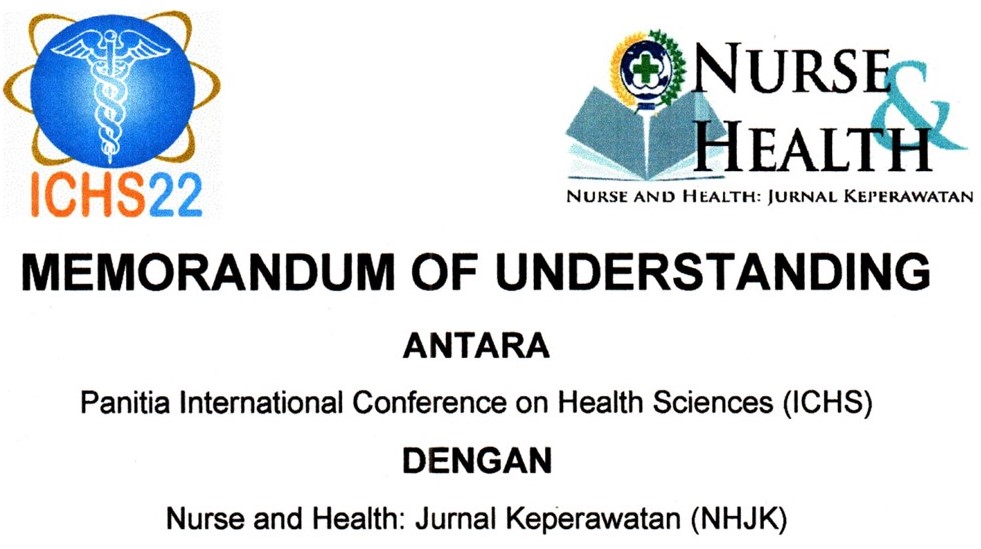APPLICATION OF PROBLEMS AND NEEDS IN PALLIATIVE CARE INSTRUMENT - SHORT VERSION (PNPC-SV) FOR ASSESSING THE PALIATIVE CARE NEEDS FOR THE CANCER PATIENTS
Abstract
Background: Assessment of the needs of palliative care is the first step to know about the picture quality of life and determine interventions to solve problems experienced by patients with chronic conditions and terminal. One of the instruments that can be used is the Problems and Needs in Palliative Care Instrument - Short Version (PNPC-SV). Instrument PNPC-SV examines the 8 dimensions of activity and exercise, physical symptoms, autonomy, psychological, spiritual, financial, and information needs. Objectives: The purpose of this study was to explore the need of palliative care with the use of the instrument Problem and Needs in Palliative Care Instrument - Short Version (PNPC-SV) in cancer patients. Methods: This research uses qualitative method with case study approach. Data collection was conducted by means of questionnaires filled in the assessment of the needs of palliative care (PNPC-SV), then performed in- depth interviews in accordance with the results of the assessment and observation on the 6 participants in the space of oncology in one of hospital in Semarang. Results: The theme results of this research are: (1) Self-acceptance as well as support to the family of the condition of the patient, (2) Influence the patient's psychological to the social environment, (3) the right education to improve the quality of life and (4) The basic components assessment of the needs palliative care should be assessed by the nurse. Conclusion: The assessment which done in a holistic manner can help the nurse to provide nursing care in accordance with the needs of the patient to face the condition of the disease. The needs of the patient in physical, psychological, social and spiritual is very necessary to maintain the balance of her consistency and integrity in the ability to remain accepted, loved and appreciated by others.Downloads
References
Asmadi. (2008). Konsep dasar keperawatan. Jakarta: EGC.
Baradero, M., Dayrit, M.W., Siswandi Y. (2008). Seri Asuhan Keperawatan Klien Kanker. Jakarta: EGC
Bart H.P. Osse MD. Myrra J.F.J. Vernooij. Egbert S. Richard P.T.M. (2004). Journal of Pain and Symptom Management: towards a new clinical tool for needs assessment in the palliative care of cancer patients: the PNPC instrument: Vol. 28 No. 4: 329-341. doi:10.1016/j.jpainsymman.2004.01.010
Buchi SS, Borne B V, DassenT, et al. (2013). Factor Associated with Supportive Care Needs of Patients Under Treatment for Breast Cancer. Europe Journal of Oncology Nursing.15(3): 260-6.
Direktorat Jendral Pencegahan dan Pengendalian Penyakit Tidak Menular. (2016). Modul TOT perawatan paliatif bagi tenaga kesehatan. Kementrian kesehatan: Negara republik Indonesia. Hal 8.
Effendy C. (Maret 2014). Pengembangan manajemen pelayanan paliatif. Jurnal manajemen pelayanan kesehatan Vol 17.
Effendy C. Vissers K. Osse B. Tejawinata S. Myrra V.D. Engels Y. (2014). Pain Practice: Comparison of problems and unmet needs of patients with advanced cancer in a European country and an Asian country: Epub ahead of print 2.
Enache RG. (2012). The relationship between anxiety, depression and self-esteem in women with breast cancer after surgery. Procedia-Social and Behavioral Sciences 33: 124-127.
Fann JR. et al. (2008). Major Depression After Breast Cancer: A Review Epidemiology and Treatment. General Hospital Psychiatry 30: 112-126.
Gendes. (2017). Studi Fenomenologi:Pemenuhan Kebutuhan Psikososial Pasien Kanker payudara yang Menjalani Kemoterapi di RSUD Tugurejo Semarang. http://eprints.undip.ac.id/56631/1/TESIS_GANDES.pdf
Mentri Kesehatan. (2007). Keputusan Mentri Kesehatan Republik Indonesia No: 812/Menkes/SK/VII/2007. Kebijak Perawatan Paliatif Mentri Kesehat Republik Indonesia.
Misgiyanto. Susilawati D. (2014). Hubungan antara dukungan keluarga dengan tingkat kecemasan penderita kanker serviks paliatif: Jurnal Keperawatan, ISSN: 2086-3071 Volume 5, Nomor 1: Hal:1 – 15. http://ejournal.umm.ac.id/index.php/keperawatan/issue/view/226/showToc
Le Thi Hien. Wallada Chanruangvanich. Orapan Thosingha. (2017). Journal of Nursing Science: Factors Related to Needs in Palliative Care among Patients with Hepatocellular Carcinoma: J NURS SCI Vol 35 Suppl 1: 87-95.
Lusiatun, Mudigdo A, Murti B. (2016). The Effect of Self-Efficacy, Family Support, and Socio-Economic Factors on the Quality of Life of Patients with Breast Cancer at Dr.Moewardi Hospital, Surakarta. Journal of Epidemiology and Public Health 1(3):182194 https://doi.org/10.26911/jepublichealth.2016.01.03.05182e-ISSN: 2549-0273 (online).
Osse, B. HP, Dassen M, Schadé E, Grol R. (2007). Palliative Medicine: A practical instrument to explore patients’ needs in palliative care: The Problems and Needs in Palliative Care questionnaire-short version: Palliative Medicine; 21:391-399
Waller. (2011). Development of a Palliative Care Needs Assessment Tool (PC-NAT) for Use by Multi-Disciplinary Health Professionals: Centre For Health Research & Psycho-Oncology.
Wiratama P. (2019). Langkah awal pengkajian dalam proses keperawatan. DOI: 10.31227/osf.io/6jpgc. https://www.researchgate.net/publication/338017457_LANGKAH_AWAL_PENGKAJIAN_DALAM_PROSES_KEPERAWATAN
Copyright (c) 2021 Ratih Ayuningtyas Pocerattu, Anggorowati, Chandra Bagus

This work is licensed under a Creative Commons Attribution-NonCommercial 4.0 International License.
Authors who publish with Nurse and Health: Jurnal Keperawatan agree to the following terms:
- Authors retain copyright licensed under a Creative Commons Attribution-NonCommercial 4.0 (CC BY-NC 4.0), which allows others to remix, tweak, and build upon the authors' work non-commercially, and although the others' new works must also acknowledge the authors and be non-commercial, they don't have to license their derivative works on the same terms.
- Authors are permitted and encouraged to post their work online (e.g., in institutional repositories or on their website) prior to and during the submission process, as it can lead to productive exchanges, as well as earlier and greater citation of published work (See The Effect of Open Access). Authors can archive pre-print and post-print or publisher's version/PDF.








_resize1.jpg)















